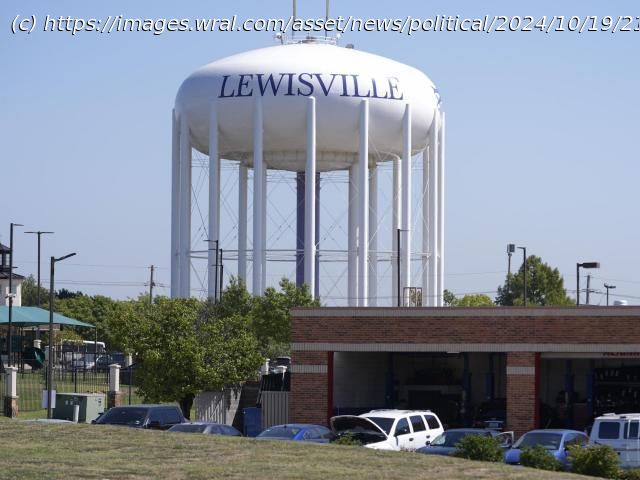LEWISVILLE, Texas (AP) — Deep in the heart of Texas’ sprawl, the city of Lewisville embodies the Lone Star State.
Deep in the heart of Texas’ sprawl, the city of Lewisville embodies the Lone Star State.
Bisected by Interstate 35 and ribboned with six- and eight-lane thoroughfares lined with chain stores, Mexican restaurants and pawn shops, Lewisville, 23 miles north of Dallas, is the prototypical slice of the nation’s second most populous state. Its typical resident is about 36 years old, the same as in Texas. Similar to statewide, 6 out of 10 residents are not white, and about two-thirds of its voters cast ballots in the 2020 presidential election.
Next door is the city of Flower Mound, a swath of swanky subdivisions with names such as Teal Wood Oaks and Chaucer Estates. Flower Mound looks more like the electorate that has kept Texas dominated by Republicans for decades. It is wealthier than Lewisville, more than two-thirds of its residents are white, and 78% of them voted in 2020.
That discrepancy, between the diverse, potential electorate of Lewisville and the actual, heavily white electorate of Flower Mound, has been the subtext for the past two decades of U.S. politics.
For a long time, the presumption has been that closing that gap between Lewisville and Flower Mound — getting more people to vote and having the electorate better represent the country’s actual population — would help Democrats and hurt Republicans. That’s because a larger electorate would mean more minorities voting, and those groups historically lean Democratic.
That presumption helped spark the Great Replacement conspiracy theory among some conservatives, imagining a plot to import immigrants to substitute for more conservative white voters. It’s been part of the fuel behind Republican-led efforts to make it tougher to vote, especially in Texas, which has some of the strictest election laws in the country. But this presidential election has flipped the script.
Republicans have built their field campaign for Donald Trump around reaching what they believe is a vast population of infrequent, conservative-leaning voters. His campaign is counting on support from younger, Latino and African American voters who are less likely to go to the polls.
Democrat Kamala Harris is relying on Black and Latino voters, but also on increasing her support among college-educated voters, a growing group that’s both highly likely to vote and helped put Democrat Joe Biden in the White House in 2020.
The contrast is clear in the neighboring cities in north Texas.
In Flower Mound, Republicans who used to dominate voting in the suburb fear it’s trending Democratic. In more diverse Lewisville, those who rarely vote or cannot are warming to Trump.
“I think Trump would make a difference,” said Brandon Taylor, 35, who cannot vote because of criminal convictions but is trying to persuade his girlfriend, Whitney Black, to cast a ballot for the former president. “We need that extra vote,” he told Black as the two, now homeless, sat on a bench outside Lewisville’s public library.
Meanwhile, Martha Mackenzie, a retired Naval officer in Flower Mound, is a former Republican who left the party over Trump.
“I just can’t get behind a lot of the BS behind Trump,” McKenzie said, scoffing particularly at Trump’s insistence that the 2020 election he lost to Biden was stolen from him.
There are, of course, plenty of Harris supporters in Lewisville and numerous Trump voters in Flower Mound. The contrast between the towns goes beyond partisan politics and more to an age-old adage voiced by Sally Ortega Putney on a recent night in a Flower Mound office park.
Home
United States
USA — mix Two Texas cities represent the divide between those who vote and those...






